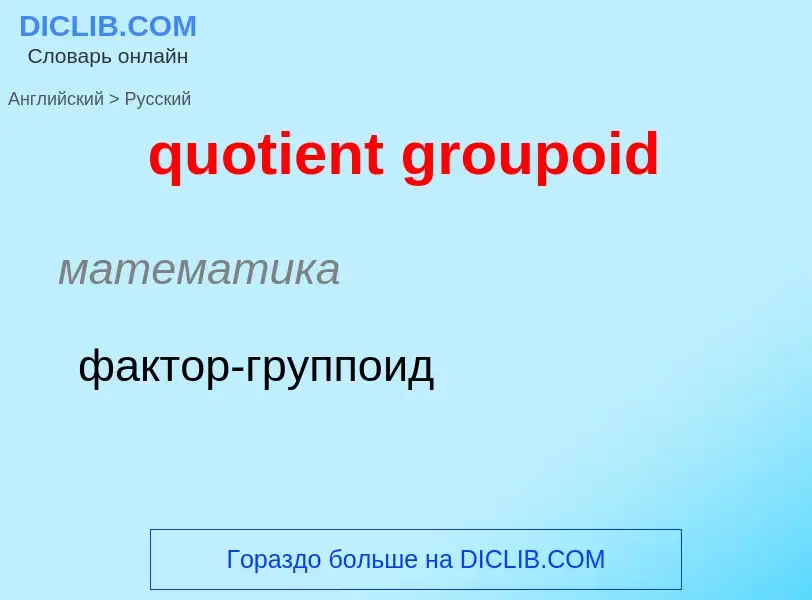Traduzione e analisi delle parole tramite l'intelligenza artificiale ChatGPT
In questa pagina puoi ottenere un'analisi dettagliata di una parola o frase, prodotta utilizzando la migliore tecnologia di intelligenza artificiale fino ad oggi:
- come viene usata la parola
- frequenza di utilizzo
- è usato più spesso nel discorso orale o scritto
- opzioni di traduzione delle parole
- esempi di utilizzo (varie frasi con traduzione)
- etimologia
quotient groupoid - traduzione in russo
математика
фактор-группоид
общая лексика
группоид
математика
фактор-топология
Definizione
.
Wikipedia
In mathematics, especially in category theory and homotopy theory, a groupoid (less often Brandt groupoid or virtual group) generalises the notion of group in several equivalent ways. A groupoid can be seen as a:
- Group with a partial function replacing the binary operation;
- Category in which every morphism is invertible. A category of this sort can be viewed as augmented with a unary operation on the morphisms, called inverse by analogy with group theory. A groupoid where there is only one object is a usual group.
In the presence of dependent typing, a category in general can be viewed as a typed monoid, and similarly, a groupoid can be viewed as simply a typed group. The morphisms take one from one object to another, and form a dependent family of types, thus morphisms might be typed , , say. Composition is then a total function: , so that .
Special cases include:
- Setoids: sets that come with an equivalence relation,
- G-sets: sets equipped with an action of a group .
Groupoids are often used to reason about geometrical objects such as manifolds. Heinrich Brandt (1927) introduced groupoids implicitly via Brandt semigroups.


